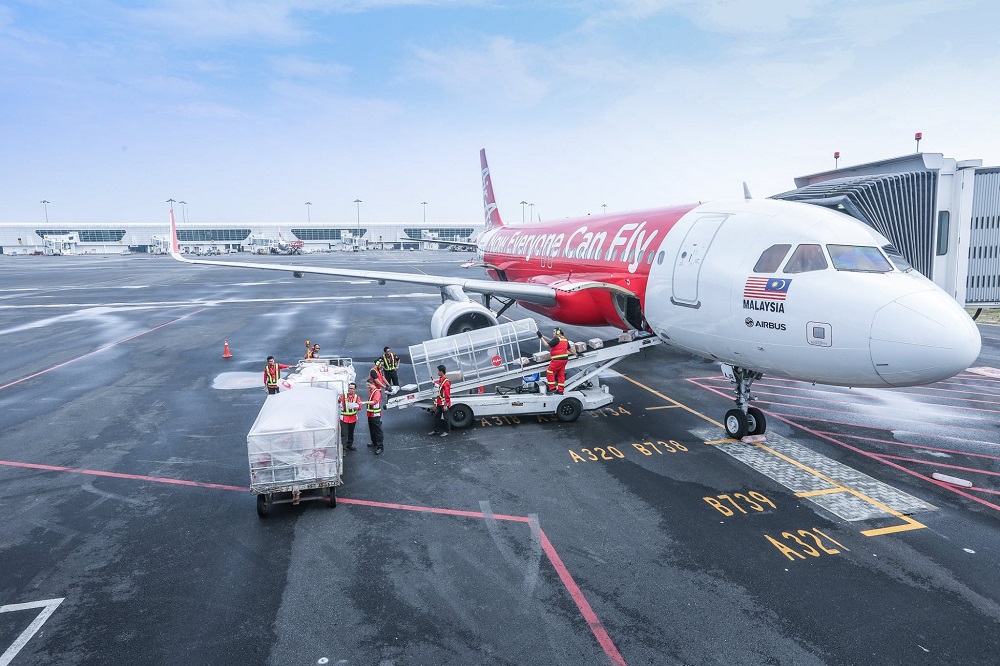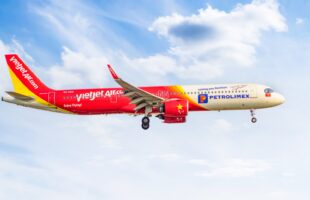
The number of low-cost carriers expanding cargo operations in the industry has risen over the years. Air cargo is a significant piece of pie for these carriers, who find a new source of revenue by taking advantage of available capacity on their carriers. With a generally lower fuel surcharge, these carriers offer to carry cargo at lower rates, milking as much profits off flights- an attractive option for cost-conscious shippers. Despite being newcomers in an age old industry, these low-cost carriers are able to preserve their standing and competitiveness in the industry, proving that they are a serious contender.
“Initially it was a challenge for customers to believe that low-cost carriers essentially provide the same terminal operators and handlers as other carriers in the industry,” says Muhamad Hidayat Rahim, Commercial Manager of AirAsia Cargo. Today, the multi award-winning carrier commands a fleet size consisting of 176 Airbus A320 and 30 Airbus A330, across a vast network of 120 destinations in 22 countries.
However, there are two sides to every coin- added complexity, costs and slower turnaround time are some of the challenges that low-cost carriers have to face. These carriers will require sales agents, cargo handlers, road feeder services and ULDs to operate, and the accompanying security and regulations are inevitable.
Staying Competitive
According to Head of Commercial at Jetstar Asia, Francis Loi, there are keen competition in Southeast Asia with plenty of belly capacity on certain routes, putting pressure on yield. At the same time, Jetstar’s fixed costs remain the same and expenses are rising every year, placing pressure on the bottom line. “Cargo-handling and Cargo Terminal Operator (CTO) costs could take up a big part of our revenue on certain routes. To overcome these challenges, Jetstar is collaborating with European Cargo Services Group Asia Pacific (ECS) to maximise revenue by focusing on better yield-performing routes, and developing new partnerships and products with direct shippers and freight forwarders.”
“Full-service carriers do not necessarily possess natural advantages over low-cost carriers when it comes to cargo operations,” says Loi. Compared to full-service carriers, low-cost carriers mainly differ from the aircraft in use; with narrow-bodies more commonly operated by the latter and wide-bodied aircrafts for full-service carriers. To Loi, the competitive advantage that low-cost carriers have on freight are its short-haul, multiple-frequency network and operational nimbleness with fast turnaround.
To penetrate the industry, many low-cost carriers are outsourcing to general sales agents who offer additional revenues and take on cargo sales for them. To stay competitive while marking its name in different markets and cargo hubs, Jetstar had appointed ECS as its general sales agency last September. ECS will handle the total cargo management and general sales agent business for Jetstar’s freight business at Singapore Changi Airport and its 25 ports across the network.
“The appointment of the new freight GSA is timely, with increased intra-Asia cross border trade driven by a growing middle-class. Partnering with ECS, which has a comprehensive freight sales network across Southeast Asia and North Asia, has also enabled better awareness and penetration of the Jetstar brand and product into different markets and cargo hubs,” said Loi.
He continues, “Also, through ECS’ global network, Jetstar is able to leverage on interline freight partnerships to sell its AWBs to ECS’ other existing customers beyond Asia. No other low-cost carrier has this range of sales. Both parties are also working closely to manage ground-handling and CTO costs.”
Further to that, the partnership also saw the carrier being able to access Cargovision, an in-house system that provides full visibility of daily performance. The system also enables customers to track and trace, and be kept up to date with the status of their cargo. With such technology in place, Jetstar is able to practice transparency and have daily monitoring on its cargo uplift and flight performance.
Since its inception in 2011, cargo operations have become a staple for Jetstar, with its dense network including some of the biggest manufacturing nations and cargo hubs in the Asian region. Recent enhancements made to the Changi Airfreight Centre, including SATS and dnata’s cold storage facilities for perishables and pharmaceuticals, presents opportunities for Jetstar’s cargo operations to thrive.
Working closely with SATS Coolport, the carrier also ensures proper storage for perishables like seafood, fruits and vegetables. Perishables uplift and tonnage has also increased two-fold since the carrier started distributing its 375 AWB last October. Additionally, Jetstar prides itself as the only low-cost carrier in Singapore that carries dangerous goods, benefiting greatly from the e-commerce boom- with plans to develop this line in coming months.
Tackling e-commerce
The rapid development of technology and increase in interconnected devices are changing retail patterns, with today’s customers demanding near-immediate fulfilment of their orders. Manufacturers seeking to reach their customers as quickly and cost-effectively as possible, are, together with e-sellers and e-buyers, preferring air freight for expedited deliveries.
Hidayat foresees that the e-commerce sector will likely play a major impact to the logistics business including, but not limited to the air cargo industry. He elaborates, “With the increase of technology services provided by multiple platforms, online purchasing has become one of the top shopping preferences to most consumers. From an airline’s perspective, we predict a change in the commodity of the type of cargo being shipped- from normal general cargo to heavy shipments of e-commerce packages.”
According to the IATA Cargo Strategy May 2017 report, e-commerce, which depends heavily on air cargo, is growing at a double-digit rate. With global e-commerce revenue forecast for 2019 at USD 3.5 trillion, and a 66% growth of e-commerce from Asia Pacific to Europe between 2013 and 2015, e-commerce holds a mammoth potential in the demand for air freight. To capitalise on this market, industry players have to change its business model to cater to these customers. “For AirAsia, we will engage the e-commerce players to deeply understand their overall business nature, including getting real time information on the type of commodity, customer’s purchasing volume and targeted delivery urgencies,” said Hidayat.
Threat of drone technology
The rise of drone technology in the logistics business is affecting the way the air cargo industry operates; for carriers, these guys are an imminent threat. Consumers are increasingly taking interest in these drones as they can provide a quicker and more cost-efficient way of making deliveries, reducing labour and ensuring promptness. For low-cost carriers operating short haul flights and/or domestic flight, the reality of drones becoming the preferred choice is getting too close for comfort.
Once fully developed, drones are predicted to cut down overseas shipping time down to less than a day, while remaining affordable. This is especially attractive for shippers with perishable goods due to its time efficiency. The “mobile warehouse” model comprising of a large and robust flying drone that is made up of numerous smaller drones, are also causing a disturbance in the traditional model. The larger drone can make long-distance flights, and the smaller drones are detachable to operate independently to deliver smaller packages. Predictively being able to provide an economically efficient service, drone technology is an indirect threat to the competitive edge for low-cost carriers.
Partnerships and deals
Full-service carriers have to find ways to deal with competition from low cost carriers, and one of the ways to manage this, is through partnership. By partnering with low-cost carriers for interline freight, airlines can sell cargo capacity on low-cost carriers. Loi says, “Apart from shipments across our network, Jetstar also partners with full-service carriers for interline freight to Australia, Europe, South Asia and the Middle East. With our extensive network, Jetstar is currently a preferred feeder or defeeder for long-haul carriers and full-service partners.”
Most recently in June, Qantas Airways and Jetstar inked a long term component pooling services agreement with Air France Industries KLM Engineering & Maintenance (AFI KLM E&M) to support their fleet of Boeing 787s. The deal will cover pool access and repairs to eight 787-9s to be operated by Qantas, and 11 787-8s that are in service with Jetstar. Qantas and Jetstar will have direct access to the AFI KLM E&M spares pool stationed at Kuala Lumpur, and will be able to rely on the latter’s worldwide network of inventories and component repair shops.
In May, AirAsia had signed a memorandum of understanding with China Everbright and Henan Government Working Group to establish a low-cost carrier in China. The joint venture, known as AirAsia (China) will operate a low-cost aviation business that is based Zhengzhou, the capital of the Henan province in central China. AirAsia (China) will also invest in aviation infrastructure including a low-cost carrier terminal at Zhengzhou airport, an aviation academy, as well as maintenance, repair and overhaul (MRO) facilities to better service aircrafts.
Another strong contender in the region, Vietjet, recently inked a series of investment deals that will see the carrier being propelled to greater heights. Earlier in May, Vietjet Aviation Joint Stock Company signed with CFM International – a joint venture of GE and Safran- for an agreement that supports 215 engines to power the airline’s fleet under the witnesses of Vietnam’s Prime Minister Nguyen Xuan Phuc and US Secretary of Commerce, Wilbur L. Ross, Jr. The 12-year long agreement, valued at USD3.6 billion, includes other technical services, engines and components maintenance.
Additionally, Vietjet and GECAS under GE, also signed a memorandum of understanding in aircraft financing worth USD1 billion. This will see GECAS’ support to Vietjet to finance and/or purchase and enter into leaseback arrangement of 10 aircraft ordered by Vietjet. Vietjet and Honeywell Aviation also inked an agreement on auxiliary power unit supply and technical maintenance to power the airline’s 98 airplanes. The agreement, worth USD 180 million, aims to help Vietjet’s fleet to be maintained under world leading standards. Vietjet currently has 40 aircrafts in service and 192 aircrafts on order. Its fleet includes 25 Airbus A320-200 and 15 Airbus A321-200, with 19 more Airbus A321-200, 42 Airbus A320neo, 31 Airbus A321neo and 100 Boeing 737 MAX 200 on order.
Vietjet had also received full membership from the International Air Transportation Association (IATA) and had previously been certified by the IATA Operational Safety Audit (IOSA), in March. The full membership signifies the carrier’s role and position in the aviation community. Vietjet has also received investment approval from the People’s Committee of Ho Chi Minh City for its Aviation Technology Center project, as part of a program to develop the Vietjet Aviation Academy in Saigon Hi-Tech Park. The project will go into operation, with the first phase being a full flight simulator center for pilot training that will run in collaboration with Airbus.









